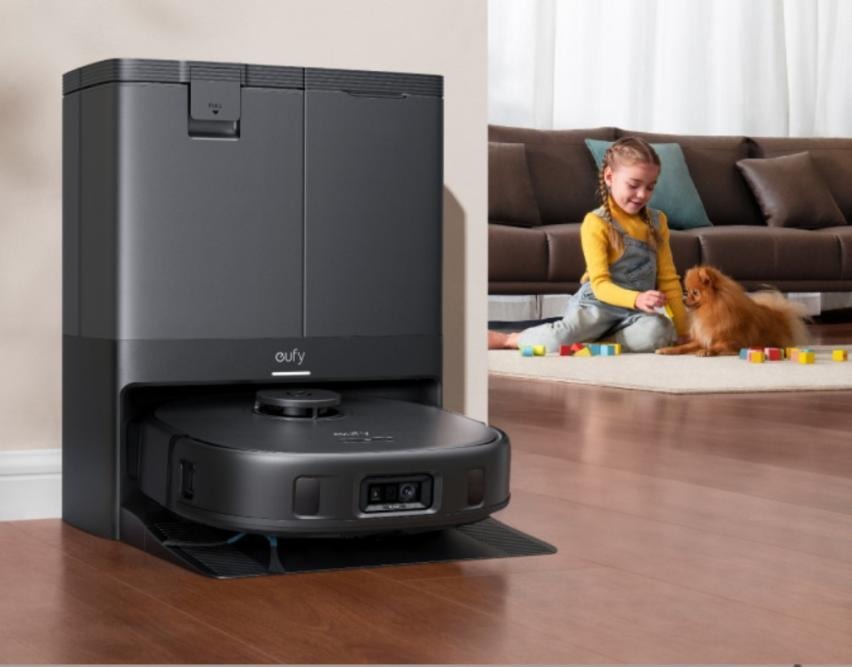Modern families benefit from robot mops, but even the best ones might fail if used incorrectly. Many users unintentionally commit setup and maintenance errors that degrade cleaning performance or cause harm. These errors may reduce the lifespan and functionality of your device by missing setup or maintenance steps. Understanding common mistakes can help you save time and money, whether you’re a new user or upgrading. This article highlights the top robot mop mistakes to avoid and provides actionable tips to get the most from your robot vacuum and mop.
Are You Setting Up Your Robot Mop Correctly?
Skipping the Initial Floor Mapping
Many robotic mops can map and learn your home’s layout. If you skip this step, your device may clean randomly or miss crucial locations. Floor mapping allows the mop to avoid impediments, clean more efficiently, and avoid recurring places. Some users avoid mapping since it takes time, even if it improves performance and cleanliness. Never clutter the first mapping, and allow the device to loop. After that, most programs allow you to name rooms and create cleaning zones.
Not Connecting to the Right App Features
Manufacturers create apps to enhance robot mop operation. Many connect the device but never use room-specific scheduling, virtual no-go zones, or water flow levels. A more customized cleaning experience is lost without these. After setup, check your robot’s companion app for customization. Allow notifications for real-time alerts, map editing, and firmware updates. Not using these features can lead to poor cleaning, missed spots, and spillage. Learn the app dashboard to maximize your robot mop.
Ignoring Firmware and App Updates
Skipping updates may appear benign, but it is one of the simplest ways to slow down your robot mop. Firmware upgrades are often used to fix issues, improve navigation, and support new devices. App updates can improve the user interface and introduce new functionality. Ignoring it can result in software failures, network issues, or cleaning problems. Set your app’s auto-update feature and check your robot’s settings to automate firmware installation. Quick updates help your mop run smoothly and safely. Always check the update notes for fixes and enhancements.
Common Daily Habits That Reduce Cleaning Efficiency
Leaving Clutter or Cables in Its Path
Robot mops are most effective in clean, wide environments. Toys, cables, and furniture legs can impede or redirect them. Sometimes, robots become stuck, wasting battery life and leaving floors unattended. Before each cleaning, quickly scan the floor and remove any small items or loose cables. Install cable organizers or tape down cords in high-traffic areas. The program allows you to mark troublesome regions as no-go zones. Clearing the path improves cleaning and protects wheels and sensors from frequent hits.
Using the Wrong Cleaning Solution
Some robot mops are not compatible with floor cleaners. Harsh chemicals or illegal solutions can harm the water tank or its components. Most manufacturers recommend water or robot-specific cleaners. Check the user manual before adding anything to the water reservoir. Improper solutions may damage the efficiency of disposable pads or void the warranty. Use suggested cleaners rather than abrasive vinegar or bleach. Using the right cleaning solution protects robot parts and produces streak-free results across all floors.
Running It Without Regular Scheduling
Robot mops perform best with consistent use. However, many users begin manually. Skipping runs allows dust and grime to accumulate, making exercises longer and less efficient. Most apps allow you to plan daily or weekly cleanings based on your lifestyle. Schedule cleanings for work or at night. A consistent mopping regimen reduces sticky messes and keeps floors clean. Smart scheduling automates device management and saves time.
What Maintenance Mistakes Can Damage Your Robot Mop?
Not Emptying the Dustbin or Water Tank Regularly
A full dustbin or water tank can strain your robot mop and reduce cleaning power. When the dustbin is full, suction drops and dirt can be pushed around. Without draining the water tank after use, interior components may leak or be damaged. Mold and mildew can also grow in residual water and produce odors. Always inspect and dump both containers after each run. It is recommended that you clean your model’s self-emptying station on a monthly basis. Premium models, such as the eufy X10 Pro Omni, have auto-emptying capabilities; however, regular checks improve performance.
Skipping Pad or Filter Cleaning
Every session, cleaning pads and filters collect dust, dirt, and moisture. If ignored, they clog and limit the effectiveness of robot mopping. Dirty pads smear floors and blocked filters can cause the motor to overheat. Most manufacturers recommend cleaning reusable pads after every use and replacing filters every few weeks. Allow pads to dry completely before reinstalling to prevent odors. Some versions include washable filters; simply wash and dry them. A clean pad and filter system ensures that your mop runs smoothly and avoids costly repairs.
Charging in High-Humidity or Dirty Zones
Dampness from a charging dock in a bathroom or kitchen corner may damage circuits over time. Setting up the base in dusty or oily environments lowers sensor accuracy and contaminates charging contacts. The ideal conditions are dry, open, and airy, with little dust. Wipe down the dock and robot charging pins once a week with a dry towel. Avoid placing the base near vents, water, or entryways. Clean and dry charging zones reduce long-term electrical damage while ensuring efficient charging. Investment protection is simple with proper placement.
Conclusion
Robot mops are useful when used and maintained correctly. Skipping setup, using the incorrect things, or neglecting maintenance can reduce device life and performance. To keep your home clean with minimal effort, avoid the most typical blunders, such as disregarding firmware changes or running it on a schedule. Clean pads, proper charging orientation, and enough floor prep will protect your investment. Use these suggestions to improve the performance and longevity of your robot vacuum and mop. Smart procedures today avoid costly problems tomorrow.






